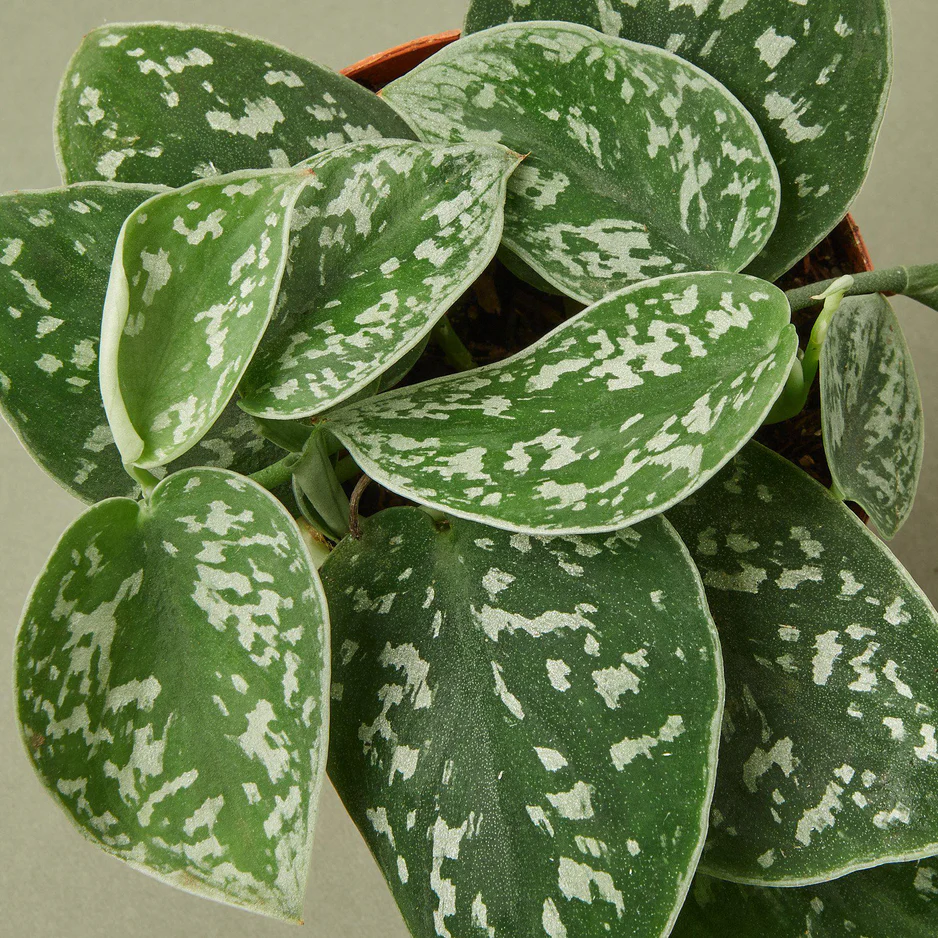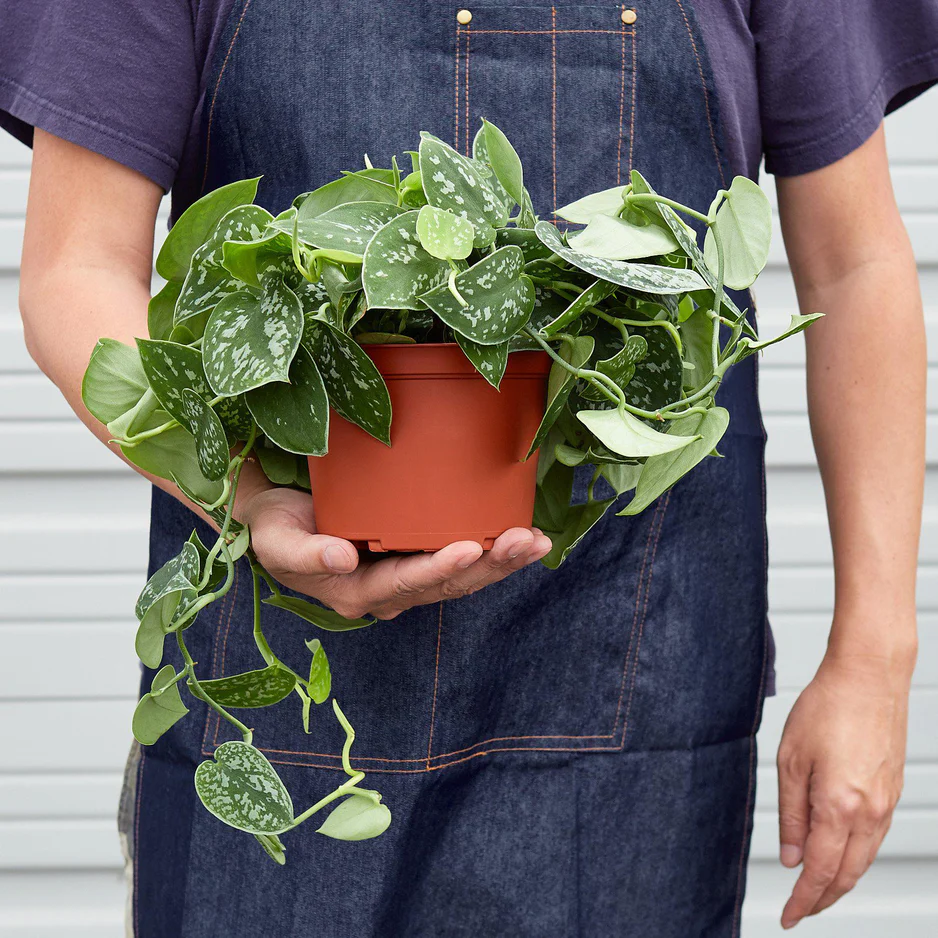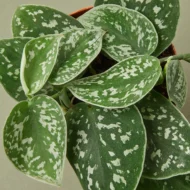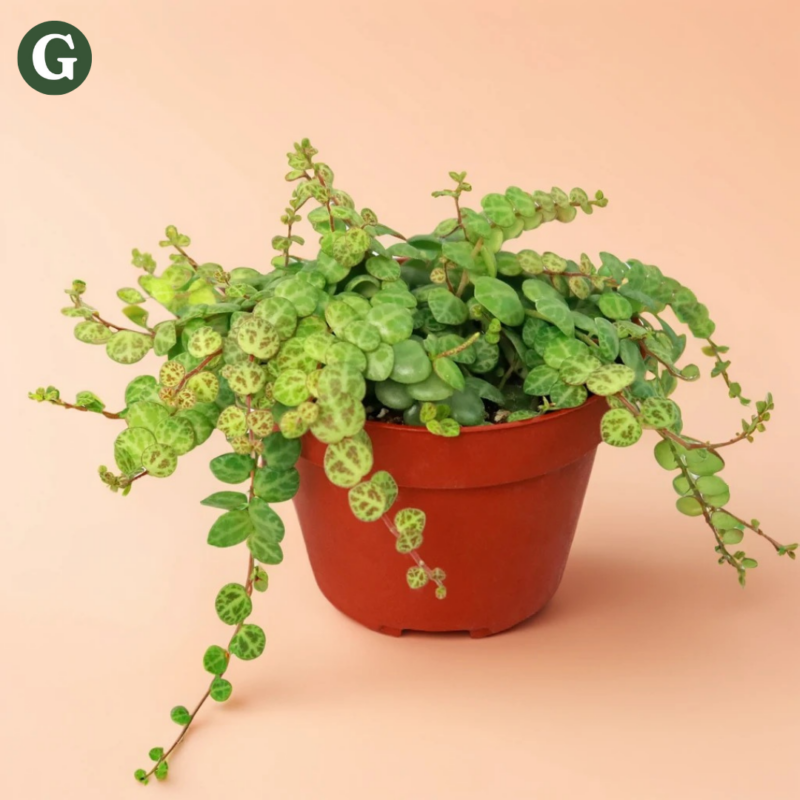Pothos Satin
Botanical Name: Epipremnum aureum 'Satin'
Common Name(s): Satin Pothos, Silk Pothos
Pothos Satin is a visually striking variety of the popular Pothos plant, celebrated for its elegant, silvery-green variegated leaves that have a glossy, satin-like finish. The shimmering foliage adds a touch of sophistication to any space, making it an attractive choice for both home decor and office environments. As a fast-growing vine, Satin Pothos can reach lengths of 6-10 feet indoors, making it ideal for hanging baskets, shelves, or as a cascading floor plant.
Satin Pothos thrives in bright, indirect light, but it can also tolerate lower light levels, though its variegation may fade in such conditions. It prefers well-draining soil and should be watered when the top inch of soil is dry. Overwatering can lead to root rot, so it’s essential to ensure proper drainage. Satin Pothos is adaptable to average room temperatures and humidity, making it easy to care for in most indoor environments.
Air Purifying Qualities:
- Toxin Removal: Satin Pothos helps to filter out common indoor toxins like formaldehyde, benzene, and xylene, contributing to improved air quality in your home.
- Oxygen Production: Like other Pothos varieties, it absorbs carbon dioxide and releases oxygen, promoting a fresher and cleaner atmosphere.
- Humidity Regulation: Satin Pothos contributes to slight increases in indoor humidity through transpiration, which can be especially beneficial in dry environments.
Note: Satin Pothos is toxic to pets (cats and dogs) if ingested, causing symptoms such as vomiting, drooling, and oral irritation. Keep it out of reach of curious pets to avoid potential health issues.
Care Insights & Expert Tips
- Fertilize regularly: Feed your plant with a balanced liquid fertilizer diluted to half strength every 3-6 weeks during the growing season (spring and summer).
- Monitor for pests: While Pothos plants are relatively pest-resistant, they're not immune. Keep an eye out for spider mites, aphids, or mealybugs. If you spot any pests, treat the plant with neem oil or insecticidal soap. Wipe the leaves down regularly to keep them clean and shiny.
- Provide support: As the plant grows, it may require a moss pole or trellis to support its vining growth.
- Be patient: Pothos plants are relatively slow growers, so don't be discouraged if they don't grow rapidly.

Visit our plant care library
Find essential tips to keep your plants thriving, vibrant, and healthy.




















